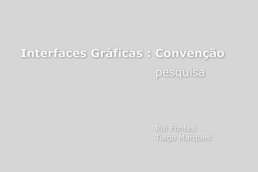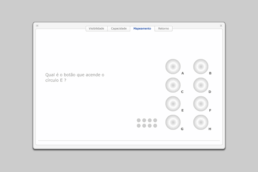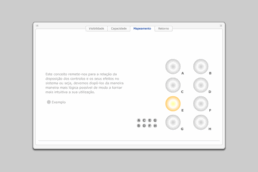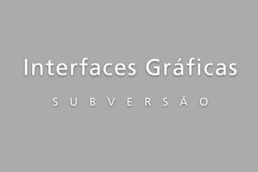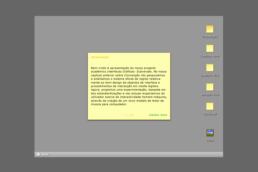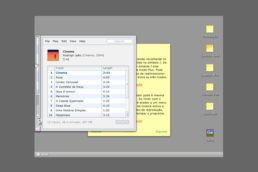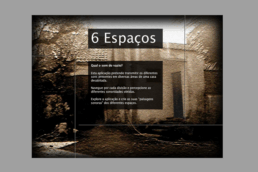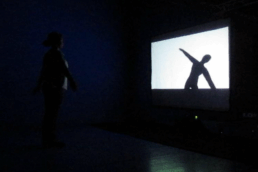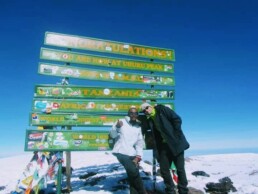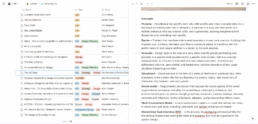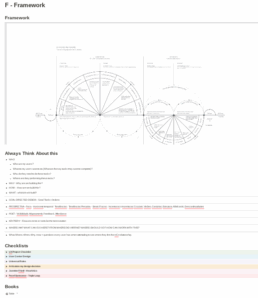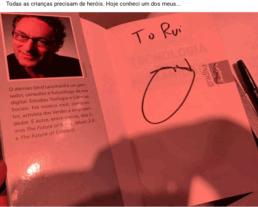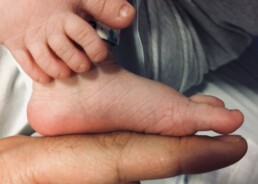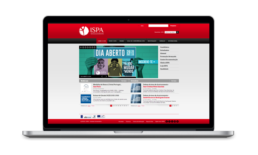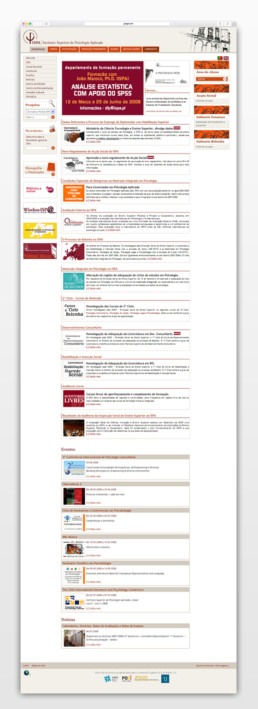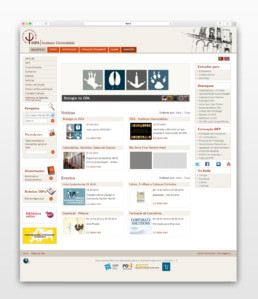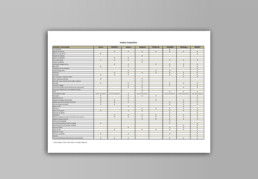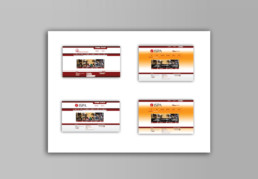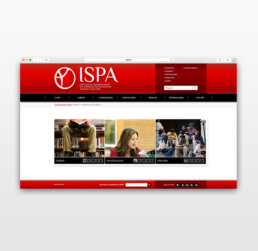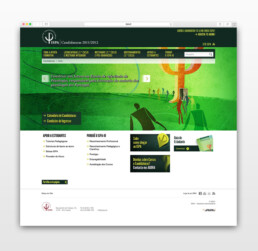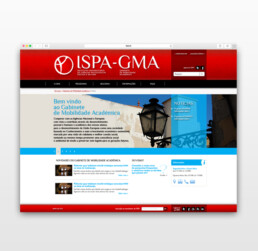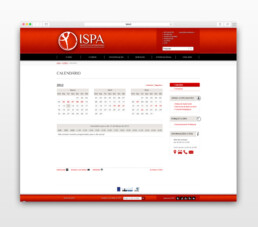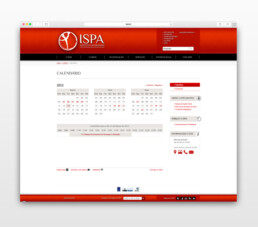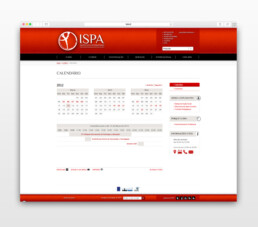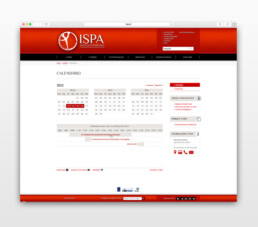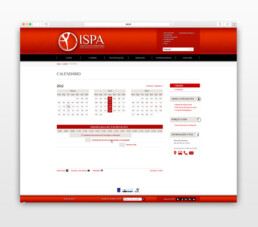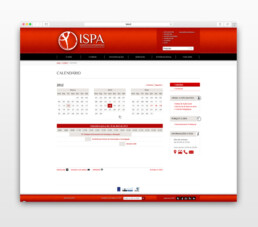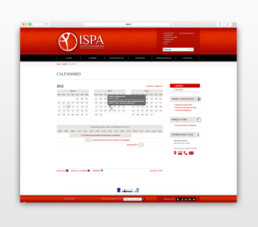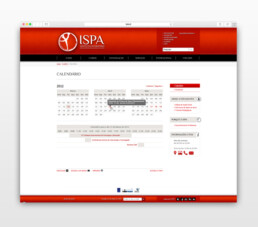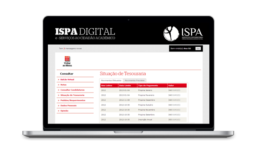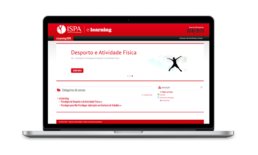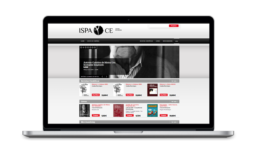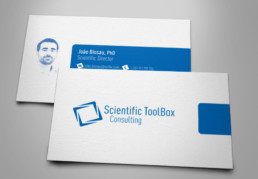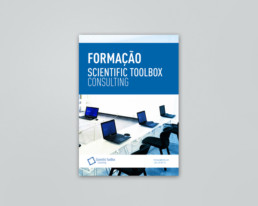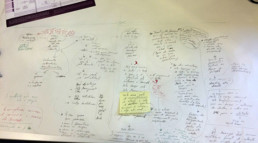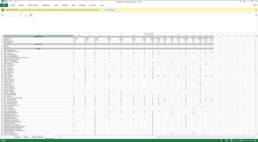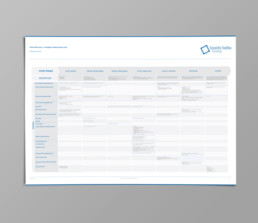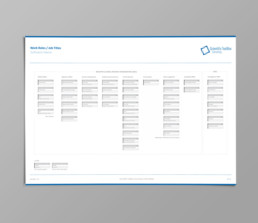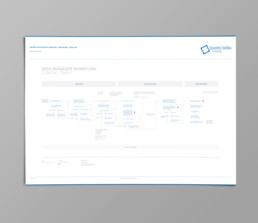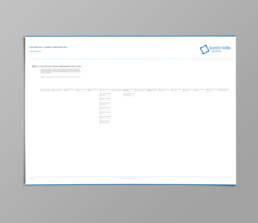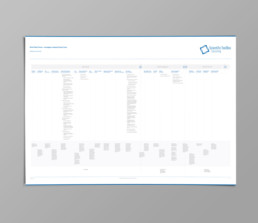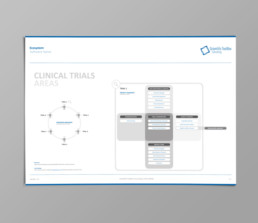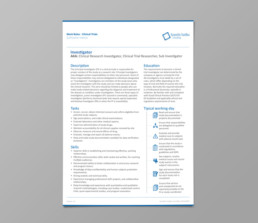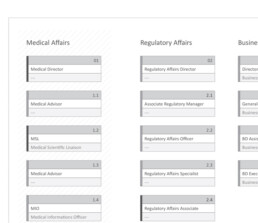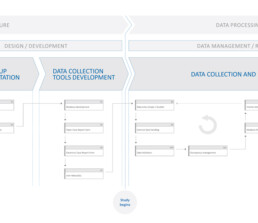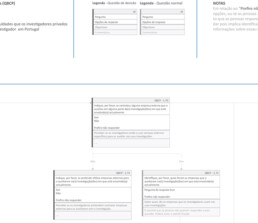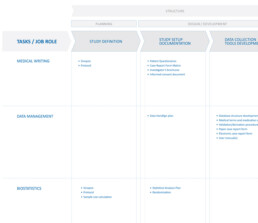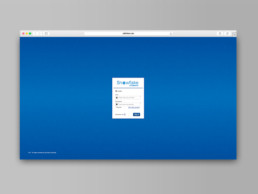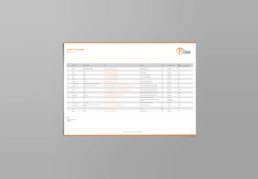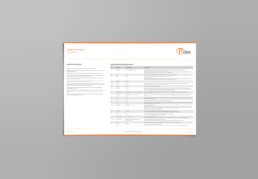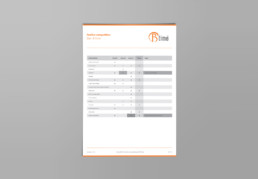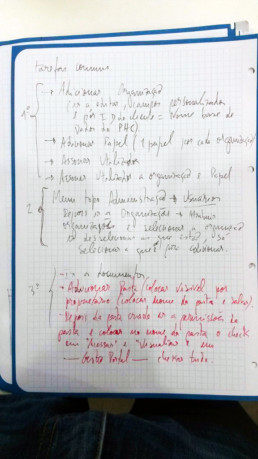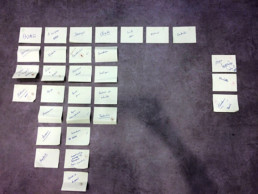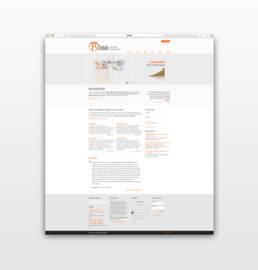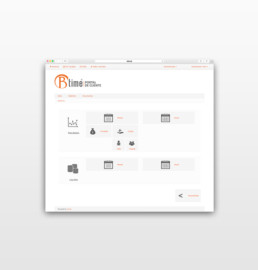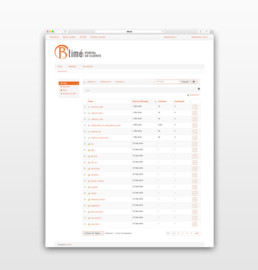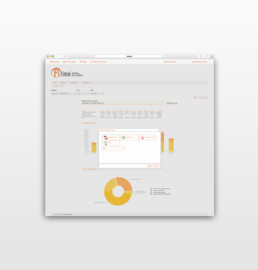Hello, and thanks for stopping by!
I’m Rui, a UX designer with over 15 years of experience creating products made by people, for people.
I’m Rui, a UX designer with 15+ years of experience creating products made by people, for people ( and not ).
I’d like to invite you to explore my journeyfólio*, for that, all you need to do is keep scrolling. If you're in a hurry and want to jump to specific sections, feel free to use the menu...
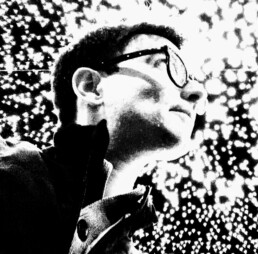
Summary
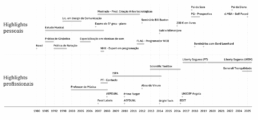
Personal Highlights
Sports Practice (Gymnastics and Swimming)
1985 - 2000
Since I was a child, my parents wanted sports to be a part of my life 🤸. I ended up balancing my studies with these extracurricular activities, only stopping after starting university 🏊.
Even today, I wake up every day around six to get my body moving 🏃 (and also my mind 🧘 ).
My musical education
1984 - 2007
My musical education 🎶 has a big impact on my life. It was my first love ❤️ and, beyond learning music, I also developed skills that have stayed with me throughout life (such as time management ⏳ ).
I'm very methodical in my approach to projects, combining theory and practice, and I'm fully aware that delivering something of value requires hard work and dedication. (I also know that, many times, we have to improvise 🤹 ).
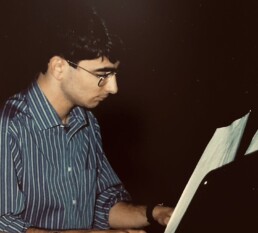
Bachelor’s Degree in Communication Design
1998 - 2005 (pre-Bologna Process)
I always wanted to be a musician, until the 4th year of my degree, when I discovered (and became fascinated 🤩 ) by the world of Human Computer Interaction (HCI). I started reading a lot about it and began focusing all my projects on interaction design.
My final project was to develop an MP3 player in Flash (yes, I’m from that era 🫣 ) that could be used with just one button. I did this project in partnership with Tiago (if you ever find yourselves in Copenhagen 🇩🇰 say hi to him, you won’t regret it!).
Specialization in Sound Techniques (ETIC)
2005 - 2006
After finishing my bachelor’s degree, I decided to pursue my musical dream. I prepared to take the conservatory exams while also completing a specialization in sound techniques.
For my final project, I developed an application (once again in Flash 🤦) to create soundscapes by mixing sounds recorded at my grandparents’ (abandoned) house. I ended up realizing that my interests were starting to blend (sound and design).
Master’s Degree in Production and Creation in Technological Arts
2007 - 2011
I decided to do my master’s 🧑🎓 while working as a web designer. Even at that time, I realized that my future wouldn’t be in the musical area.
Once again, my interests crossed over and I developed my thesis 📚 on the topic “Design of useful sounds for user experience”. I also created an art installation 🎨 where a person, through movement, could interact with “hidden” sounds in the environment.
UX Seminar with Bill Buxton and Arnie Lund
2012
One of the books I enjoyed reading the most was Sketching User Experiences: Getting the Design Right and the Right Design ( by Bill Buxton ) 😍 . When I found out he was coming to Portugal, I did everything I could to see him.
I was fascinated by everything I heard at the conference The Nature of Natural User Interaction, including a study about how we rotate our notebooks when we write ✍ and we’re not even aware of it. I also enjoyed hearing Arnie Lund speak at the conference Bringing Innovation to the User Experience Design and Development Process (the combination of agile development methodologies and UX methodologies eventually became an area of interest for me).
Climbing Kilimanjaro
2014
I love to travel, and I’ve been to several places around the world (funny enough, I still haven’t been to Asia). One of the things I enjoyed the most in all my travels was climbing Kilimanjaro 🏔 on New Year’s Eve.
This trip changed me — I can’t really explain why, but being in that freezing cold 🥶 climbing pole-pole and watching the sun rise from beneath the clouds ⛅ is something I’ll never forget. A huge effort to reach the summit, spend just a few minutes there, and then come down as fast as possible.None of this would’ve been possible without Ramadan. If you're thinking about visiting Tanzania, don’t look for anyone else.
€200 in Books
2015
I’ve always loved reading, but I mostly focused on UX-related literature. One of the best gifts I ever received was a €200 💰 voucher to spend on books. With one condition: they couldn’t be about UX (or anything similar).
I ended up exploring other interests that I’d usually put on the back burner. What stood out to me the most was that it turned out to be one of the years I read the most books. (Besides reading, I usually summarize the ones that interest me the most and take notes to help apply what I’ve learned in everyday life — when I started doing this, Shortform didn’t even exist yet 😅 ).
Postgraduate Degree in Strategic Foresight and Innovation
2016 - 2017
I received a scholarship and took the opportunity to do a postgraduate course in foresight. I loved this course because it brought together many topics I’m passionate about (strategy and innovation).
I started the course just five days after my oldest daughter was born 👶 (I’ll never forget the support and motivation my wife gave me). I ended up developing a framework (meaning, a “collection of various resources”) where I brought together (and still bring together) all my readings and interests. The goal is to help me question my daily practice.
Two Conferences with Gerd Leonhard
2018 & 2019
My post-graduate studies introduced me to a whole new world and new thinkers—among them, Gerd—who deepened my interest in areas like foresight, strategy, and innovation. They also sparked my curiosity in topics such as systems thinking, sustainability, circular economy, and business thinking (which I later explored further through the d.MBA).
The knowledge I gained at these conferences had a profound effect on me. It made me realise that, as a designer, I can (as Gerd says) create either heaven or hell. And today, that idea feels more relevant than ever.
Becoming a Father
2017 & 2021
I was born to be a father, I knew it even before it happened. Today, I’m the proud dad of two little girls 💕 (ages 4 and 7). I organise my day so I can be there when they wake up and again as soon as they’re done with their activities.
Someone once told me that I’d really understand what it meant to have work once I had a second child. What I feel is that it gave me great discipline in managing my time and deciding what’s truly a priority.
Professional Highlights
Freelancer
2007 - 2016
Back when I was still in university, I started picking up a few freelance projects—mainly branding and small websites development. Over time, those projects grew in complexity, and eventually, I moved away from freelancing (especially after the birth of my first daughter).
Working without a safety net and being fully accountable for my own work gave me a lot of hands-on experience, not just in UX, but also in managing client expectations, handling project management...
ISPA – University Institute
2008 - 2014
I spent several years at this institution during my career. I finished my journey there as a UX designer but I went through several roles including (webdesign, graphic design and multimedia).
I had the opportunity to develop various projects, the biggest of which was the complete overhaul of all digital communication (working closely with the great Ricardo). This project resulted in the creation of a portal with multiple sites (16), an intranet, an online store, an administration system, and a virtual tour.
New ISPA portal
UX Design + Usability Testing + User Research
Context
University institute, with a strong tradition in the teaching of psychology in Portugal, with a rather informal environment.
My initial efforts were focused on improving the existing platforms (public website and intranet – built in Microsoft SharePoint). In this sense, I translated the concerns of the different ISPA structures into solutions for the portals. Most of my work resulted in improving the information architecture and, in terms of interaction design, trying to enhance the usability of the existing pages.
After some research with students, staff, and management, I eventually managed to improve the public site by introducing navigation elements (built in ActionScript 2.0) that were placed on different pages of the public site.
Problem to solve
ISPA's digital structure was outdated in terms of technology and content, and it did not meet the demands of the management, staff, and students.
ISPA’s management decided to create a new portal, in order to support a new institutional identity, give autonomy to the different entities of the institute for managing their areas, and modernize its entire digital structure to achieve a solution that would serve as a collaboration platform between staff (faculty and employees), students, and external individuals.
For faculty and staff, the existing solution did not meet their needs. Processes were all very manual, which resulted in slower procedures and more errors. For students, it was very complicated to communicate with faculty or the administration, often having to go physically to the facilities to carry out simple procedures.
Approach
ISPA’s management assembled a team (which I was part of) that was made responsible for the “New ISPA Portal”. My role in this team focused on UX design. Basically, I carried out user research, competitive analysis, heuristic evaluations, and content analysis of the existing site, as well as translating ISPA’s strategy into portal requirements and prototyping to test concepts.
One of the advantages of working in a university context is the ease of recruiting participants for the entire process (user research, usability testing). Through guerrilla testing and more structured interviews with students, faculty, and staff who were willing to help, it was relatively easy to gather data that allowed us to begin translating the corporate strategy into more tangible outputs.
In order to gain external insights, two companies were hired — one for development and another for marketing. I was also involved in the decision-making process regarding the selection of the companies that would work with ISPA.
Later on, I ended up acting as a “bridge” between the different structures, gathering and translating all the necessary information (such as ways of working, flow analysis, organization and structuring of that information, in order to create the new information architecture of the portal) with the goal of ensuring a smooth transition from what we were used to.
Concetps studied
Study for calendar (not implemented)
Result
The ISPA portal was developed in several phases and is composed of various microsites that allow the different departments of the university institute to manage content in an integrated way.
Um dos motivos que mais agradou à comunidade foi que as candidaturas ao ISPA passaram a ser feitas online, coisa que até então não acontecia. Acabámos por desenvolver:
- Online store;
- E-learning platform and student portal (developed on the Moodle platform);
- Virtual administrative office;
- Application site;
- Internal site for staff;
- Alumni site (currently the job portal);
- Specific site for the advanced training department;
- Specific site for the documentation center;
- Virtual tour;
- 11 microsites for specific entities (including the university clinic).
Implemented portal
Summary of my contributions
Although I held different roles at ISPA, the development of the new portal had a major impact on my responsibilities, which were largely focused on the points below:
- Competitive analysis;
- Heuristic evaluation of the existing site content;
- Translation of the corporate strategy into portal requirements;
- High- and low-fidelity prototyping (wireframes);
- Coordination and communication with the companies (design and development) involved in building the various platforms;
- User interface design, interaction design, and XHTML and CSS development (for specific portal pages);
- Usability testing and writing of error reports to propose improvements to implemented solutions;
- Google Analytics management to analyze user behavior and make informed decisions regarding new improvement proposals for the portal;
- Internal trainer for different entities on how to use the management consoles associated with the various sites.
Lessons learned
I learned two key lessons in this project. The first was the need to evangelize best design practices to people who don’t have that background, and the second was the importance of managing different stakeholders with varying sensitivities and priorities.
One of the biggest challenges I faced in this project was working within an organization where the maturity level regarding the user experience discipline was low. Working in this context was interesting because it allowed me to grow professionally by having to internally translate the best practices brought by the external companies hired to support us.
Managing the priorities of different departments (such as wanting visibility on the homepage) in relation to the ongoing work was particularly interesting, as it taught me how to handle conflicting opinions.
Scientific Toolbox Consulting
2013 - 2016
After doing some freelance work, I was invited to join the project as a partner. I came on board to develop the brand and bring a design mindset to the products being developed by the company.
It was a very important moment in my career, as it taught me valuable lessons about business development and life in a startup.
Scientific ToolBox Consulting Software
UX Research + UX Design + Brand Development
Context
I joined this startup with the goal of developing an alternative to the software used in clinical trials.
My entry into the startup served to provide the missing contribution to the initial team, which lacked design skills (one developer and one person with business knowledge).
At the start of my work, I developed the company’s brand image (as well as the website and all associated communication) and conducted desk research in the area of clinical trials. The first phase was to understand the context in which I would be working, and the second phase was to begin developing mockups to test concepts.
At the same time, I worked on parallel tasks in the company’s service area (such as websites for specific projects, portals where clinical studies could be conducted, and development of communication materials) to ensure the company’s sustainability.
As the team grew, I began using the company’s internal knowledge to develop the initial proposals for the software we intended to create.
Problem to solve
Analyzing the clinical trials market, it was concluded that many companies recruited a type of service that included the use of dedicated software. Existing solutions could be improved and did not serve all niches of that market.
From the knowledge acquired during the market analysis of clinical trials, it was possible to identify gaps and entry points that indicated the possibility of developing software suited to this market; there were several entry points and niches to explore. Existing software was expensive, which prevented small companies from acquiring it. The freemium or open source alternatives were not easy to use.
The biggest problems found with the software used were related to:
- Usability
- Difficult to use
- Not intuitive
- Poor performance in daily tasks
- Long learning curve
- Functionality
- Missing (considered) main features
- Did not adapt to the needs of most clients the company worked with (market niche)
- Cost
- The cost of software considered adequate for managing clinical trials (in the market niche we planned to enter) was prohibitive.
Approach
Since I had access to people who worked with the company (clients) and my colleagues dedicated to the services area, I made efforts to access information (regarding: specific language of this market, processes, ways of working, daily problems…) in this area.
However, much information was not accessible to me (due to rules and regulations), namely proprietary software used to manage some trials, and study content where the company worked.
As new resources joined the company, I used the training sessions given to them to also learn about the whole ecosystem surrounding the world of clinical trials. Having privileged access to clients and colleagues working in the services area, I was able to develop workshops and other research activities (such as interviews, direct observation…) to understand their goals and motivations, their pains and difficulties, as well as the tasks they performed daily. This allowed me to begin understanding the work context in this area, gather some materials used, and create documents based on the insights I collected (such as personas, user type definitions, workflows…).
I ended up installing open source software, often used in this market, to start understanding the features of this type of software as well as the terminology and workflows, having developed some fictitious clinical studies to understand the type of work associated with this world.
Produced documentation
Details of Produced Documentation
Result
Unfortunately, although I reached the stage of producing wireframes and some prototypes to define interaction and start testing design concepts, the company shifted its focus more towards providing services.
I ended up producing documentation that helped (and guided) the software development process. Since the area is very complex and highly regulated, I focused more on understanding the social context, the interactions between different stakeholders, the general types of tasks that were supposed to be done for each type of work, and the type of outputs each person was expected to deliver.
I also analyzed possible software (open source), gathering information from those who worked with them.
Summary of my contributions
Although I worked on different projects, the research development to try to understand the (complex) context of clinical trials was without a doubt something rewarding. I also ended up having roles more related to the development of small websites for specific projects.
- Task analysis and definition;
- Market research and competitive analysis;
- User research and definition;
- Creation of personas;
- Conducting surveys and workshops for defining functional requirements;
- Research and definition of roles (work roles);
- Creation of social models (ecosystems);
- Definition of information architecture;
- Creation of wireframes and flows (task analysis);
- User interface design, interaction design, and XHTML and CSS programming.
Lessons learned
A research phase requires a great investment of time and money. In this case (a startup with the need for funding), having a resource to research and work on a long-term goal is quite complicated.
The need to raise funding for day-to-day operations often distracted me from the initial objective, working on short-term projects considered more urgent/important because they financed the company. After some time, the focus on services grew enormously, and it no longer made sense for me to stay in the company (much to my regret) with a promise to develop software that would hardly come to fruition.
B.Time – Business Solutions
2015
B.Time Accounting Portal
UX Research + UX Design + Front End Development
Context
Following contact to do freelance work for B.Time, the option was studied that involved the entry of the company I was working for at the time into this project, broadening its scope.
I often like to work as a freelancer on short- or medium-term projects. It was through a contact to see if it was possible to restructure the site that, after some initial conversations, we realized that B.Time could develop a value-added proposition for its clients.
Thus, I suggested an option that involved the company I worked for (Scientific ToolBox Consulting) in this work, and instead of just making a website to refresh the image, it was possible to think of a project for a portal where clients had immediate access to all their accounting information, in real time, in order to have more transparency about the services provided by the company.
Problem to solve
There was a reserved area for the company’s clients; however, it was only a repository of company documents, often with outdated information and difficult to find. The technology was old, which caused many problems regarding updates.
We were also told that an appealing website could be a competitive advantage compared to competitor sites. There was also a desire for the site to be made as quickly as possible to carry out a “campaign” to attract new clients since the company was growing.
It was also necessary for the portal to be able to show the tax information of client companies in real time. From B.Time’s point of view, this fact was considered crucial as it would be a way to maintain the company’s credibility with its clients.
Approach
Before starting any work, I conducted research on competing companies and evaluated the existing B.Time website at the time, where several problems were identified, such as poorly structured links, outdated content, no concern for search engine optimization, and issues with the information architecture.
I explained that a new website, if developed without reviewing the content, would be useless, just a prettier face for an outdated portal. Therefore, I conducted workshops with B.Time’s management to determine the information architecture (card sorting), the functionalities to include on the site, and the type of content to place on each page. I also requested access to the company to observe how they worked, the processes used to update the current site, and to understand how B.Time communicated with its clients. Additionally, I requested access to some clients to understand what would be important to them in an ideal accounting portal.
From conversations with some of B.Time’s clients and potential clients of accounting firms, it was indicated that one of the key reasons they would choose such a company, if they didn’t have one, would be the portfolio of services and verified client testimonials. These insights set the tone for the website’s design. Interviews with clients also revealed functionalities that were not initially considered by B.Time, leading us to revise our initial proposals.
Result
Due to the tight deadlines of the project, we ended up dividing it into two phases: the first was the public website, and the second was the private area.
Since there were two phases for development, some wireframes were created to suggest a site structure and a design concept. After choosing the winning concept, to reduce costs in the proposal, we suggested that B.Time select a WordPress template that could be adapted, and we presented two options.
All the content for each page was also developed. At this stage, we were also asked to create an image gallery. Since I have photography skills, we agreed to handle everything—from taking photos of the office and team to editing the images for use on the portal. The idea behind the photos was to show that the company was growing and to highlight the new office. There were some platforms that could connect to the site; however, after consideration, Liferay was chosen due to technical constraints (it integrated with B.Time’s internal management system and allowed data visualization from databases in graphs, which B.Time appreciated).
The client area was designed to be simple, with only one navigation level offering two options (document management or management information). To facilitate report viewing, a specific HTML and CSS page was created (compatible with most browsers and devices) so that everything the client needed would appear on the screen. Information placement studies were conducted to decide the best way to visualize data, and several tests were performed, revealing some issues (in report viewing) that were subsequently fixed.
My role in this project phase was mainly related to interface development and its implementation in HTML and CSS, as well as adapting and creating some of the portal elements.
Summary of my contributions
I ended up performing various roles in this project, with the most important being the evangelization of best practices for product development (involving the client as a partner rather than just a customer).
- Task analysis and definition;
- Market research and competitive analysis;
- Conducting surveys and workshops to define functional requirements;
- Definition of information architecture;
- Creation of wireframes;
- User interface design, interaction design, and XHTML and CSS programming.
Lessons learned
One of the biggest lessons I learned in this project is the need to treat clients as part of the same team. We all work towards the same goal, and effective and clear communication is crucial for projects to run smoothly.
Building good relationships with clients is essential for projects to succeed. In this experience, I realized that when we involve the client in the creation / execution process of the product, it is easier for them to understand our challenges and be more open to accepting changes due to unforeseen impacts early in the project.
Managing their expectations regarding requests not included in the initial scope, or explaining our decisions at every step, is extremely important (instead of presenting a finished solution for validation).
Liberty Seguros
2016 - 2024
There are two Libertys in my life: the first operating in Portugal, and the second after the merger as WEM – Western European Markets (where I began working in an international context).
I have nothing but good things to say about this company, although I am not allowed (by contract) to share details about the work I did. However, I can say that I worked as a UX Designer on various projects during my time here.
Generali Tranquilidade
2024 - present
I’m currently working at Generali Tranquilidade as a Customer Experience Specialist after the Generali group acquired the European operations from Liberty Mutual.
I belong to the Customer Experience & Projects team. I work with the wonderful Teresa on creating and developing the new CX area, as well as researching and mapping current processes to identify opportunities for improvement.
Contact
Interested in talking with me?
Thank you for taking the time to get to know me. If you’ve made it this far, you’re probably curious to learn a bit more.
At the moment, I’m working full-time at Generali Tranquilidade. I’m also developing some personal projects (among them, a children’s storybook 🥰 ). That said, I’m open to exploring new projects with great people (as I said at the beginning, it’s all about people 😊 ).
Credits
Where did this journefolio come from?
The idea for this journefolio came out of a few conversations with Raquel (creator of the JourneyFolio). Our conversations inspire me, and inspired me to create my own.
I had already tried working with Raquel on another project, and I was really inspired by the way she “tells stories.” That got me thinking about how I could shape my own portfolio around that concept and this is how it turned out.
Hope you enjoyed it ❤️ !
